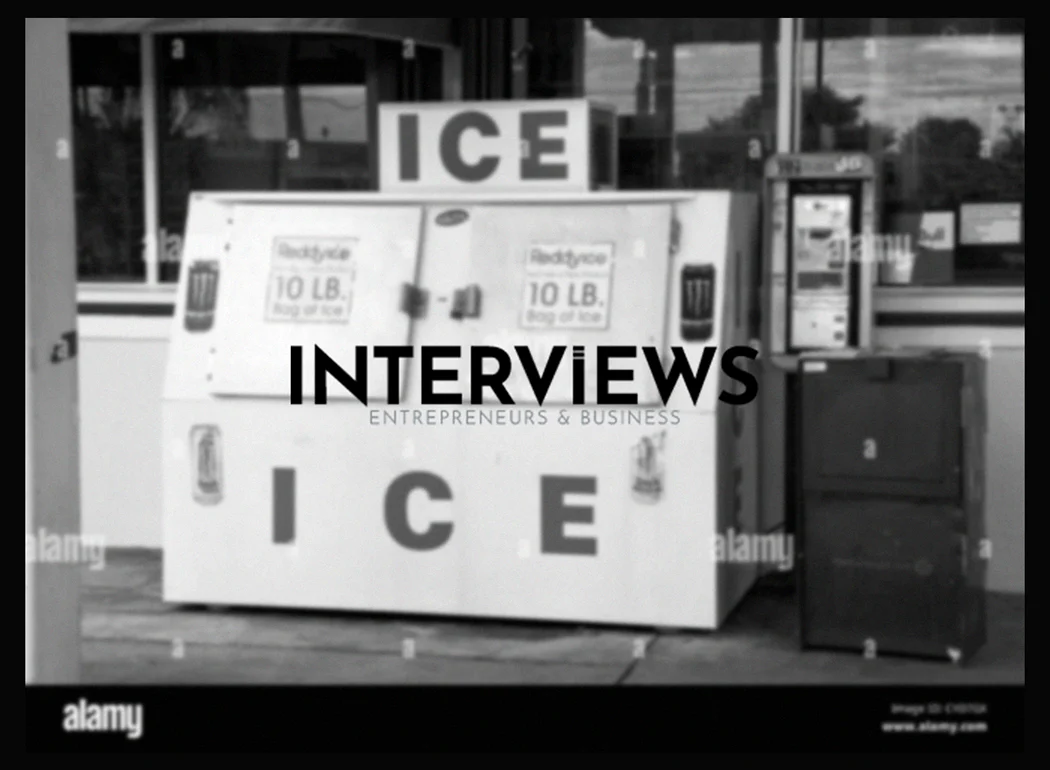Dive into the Chill Business of Ice Vending Machines: Is it Really a Gold Mine?
Want a cool business? Ice vending machines might be for you. They’re everywhere, from gas stations to apartment buildings. They can bring good profits. Whether it’s a full-time job or a side gig, it can help with your retirement income. But before diving in, let’s review the real facts.
Is the Ice Vending Machine Business Actually Profitable?
Let’s be clear: yes, ice vending machines can be profitable. A single machine can make between $22,047 to $107,348 annually. That’s a strong amount. Location matters as much as the ice itself – more on that later.
How about ice cream machines? They can be lucrative! Ice cream has low production costs but high sales prices. Plus, machines save on staff and rent. Just you, the machine, and cash potential.
Ready to Start Your Own Ice Empire? Here’s Your Chilly Blueprint
Feeling inspired? Great! Starting an ice vending business requires planning. Here’s what you need:
The Initial Frosty Investment
Be ready to spend. A basic ice cube business costs about ₹1 lakh (Indian Rupees). This includes a good deep freezer. You’ll also need other equipment – ice doesn’t just appear, unless you live in Antarctica.
Essential Gear for Your Ice Machine Dream
To be an ice tycoon, more than freezers is needed. Here’s your checklist:
- Commercial Ice Makers, Ice Machines, and Freezer Storage Units: Key for making and storing ice. Don’t skimp.
- Warehouse, Production, and Storage Space: You need room to store and manage ice. Don’t operate from your bathroom.
- Bagging and Packaging Equipment/Supplies: Presentation matters for ice. Get ready for packaging.
- Refrigerated Trucks or Vans: You’ll need to deliver ice. Keep it cool on the road.
- Permits/Licenses for Food Production and Sales: Uncle Sam wants to know about your business. Get your paperwork right.
Crafting Your Business Plan: Your Icy Roadmap to Success
No business thrives without a plan. Sketch a solid one here. Outline:
- Your business goals (world ice domination?).
- Financial projections (how much cash do you expect?).
- Your strategy for location and icy products.
Choosing Your Legal Armor: LLC or Sole Proprietorship?
Get legal! Choose a business structure. LLC (Limited Liability Company) or Sole Proprietorship are common choices. Pick one fitting your style and needs.
License to Chill: Permits and Permissions
Don’t forget permits and licenses. You’ll need permission to run a vending business in your area. This might include a seller’s permit and business registration. Think of it as your “license to chill”.
Location, Location, Location: Where to Park Your Ice Machine for Maximum Chill?
In ice vending, location matters. A machine in a remote area is like selling snow to Eskimos. You want busy places with thirsty customers.
Prime Real Estate for Your Ice Machine Empire
Consider these spots:
- Convenience Stores: If you own one, great! If not, partner with owners.
- Busy Roadways and Near Highways: Commuters need cold drinks.
- Large Workplaces: Offices and factories have thirsty workers.
- Lobbies: Hotels and apartment lobbies draw foot traffic.
- Car Washes and Shopping Centers: Customers are already spending money.
High foot traffic is your goal. More people mean more ice buyers.
Negotiating with Property Owners: Let’s Talk Rent (and Ice Percentages)
You need property owners’ approval. Contact them, make deals, negotiate contracts for placing your machine. This often involves sharing sales percentages as rent.
Market Research: Know Your Ice-Loving Crowd
Don’t skip your homework. Analyze your target market and competition. What ice products will sell best? Regular ice? Flavored options?
The Cold Hard Costs of Ice Machines: From Purchase to Operation
Let’s discuss numbers. Ice machines are not cheap freezers from appliance stores. They come at significant prices.
The Initial Price of Frosty Machinery
For example, Twice the Ice machines can cost between $60,000 to $150,000 or more. The model affects pricing. Here’s a rough breakdown:
- Ice House: Around $150,000+. The top model.
- Kiosk: $120,000 – $150,000. Less expensive but still fancy.
- Merchant: $60,000 – $95,000+. A serious investment option.
Ongoing Operating Costs: Keeping the Ice Flowing
The purchase cost is only part of it. Consider ongoing running costs:
- Water and Electricity Consumption: Machines need both to work. Water may cost $20–$50 monthly; electricity, $30–$70.
- Repairs: Machines can break down. Repairs average around $708.
- Backup Ice: If machines malfunction, have backup ice ready for customers.
- Installation: Keep installation costs in mind when budgeting.
- Maintenance: Regular cleaning is essential for machine longevity.
Air-Cooled vs. Water-Cooled: The Energy Efficiency Face-Off
Air-cooled machines are more energy efficient. Water-cooled machines are quieter but handle heat better. Choose based on location needs.
Leasing vs. Buying: Predictable Monthly Bills vs. Ownership
Decide between leasing or buying. Leasing means fixed monthly costs, while buying involves hefty upfront costs. Review budgets carefully.
Vending Machine Operations: Running a Smooth, Chilled Machine
Running a vending machine business is not hands-off. It takes attention to keep everything running smoothly.
Product Selection: Beyond Just Ice
Iced is the main product, but consider adding other profitable items:
- Water
- Candy
- Soda
- Chips
- Energy Drinks
Snacks drive sales too. Chips and chocolate bars always sell well. Variety increases profit opportunities.
Maintenance and Cleaning: Spotless Ice is Happy Ice (and Happy Customers)
You need hygiene as a priority. Dirty ice is unacceptable. It can
Clean ice machines regularly. Disease spreads quickly. Poor hygiene can hurt your image. So, strict cleaning schedules are crucial for commercial ice machines.
Restocking Rhythm: Keep Ice Flowing Based on Demand
Avoid running out of ice. Create a restocking plan based on your location’s traffic. It can be daily or weekly. Ensure ice bins stay full.
Cash Handling: The Not-So-Fun Part of Frosty Fortunes
Managing cash is tricky. It can also bring security issues. Design a system to handle cash efficiently. Think about going cashless to ease your stress.
Customer Service: Vending Machines Need It Too
Customer service matters, even for machines. Deliver great service to property owners. Satisfied owners lead to successful locations and profits. Address problems quickly.
Regulations and Permissions: The Legal Iceberg
Like any business, ice vending machines face regulations. You need permits, licenses, and rules to follow.
Permission Please: Property Owners Hold the Key
Start with consent from property owners or managers. Do not set up machines without approval. After that, obtain necessary licenses from local and state authorities, especially for food sales like ice.
License to Operate: Your Legal Checklist
Your checklist may include:
- A business license.
- A vending machine license.
- A food service or beverage license, because ice is food.
Get everything sorted to avoid costly fines.
Food Safety First: Ice is Food, Treat it with Care
Food safety matters. Your machines must meet safety standards. Follow cleaning and maintenance guidelines. Ensure your ice is only refreshing.
Insurance: Accidents Happen, Even with Ice
Think about getting liability insurance. It protects your business against problems. Insurance acts as a safety net you hope to never use.
Local Laws and Regulations: Keep Informed
Laws vary widely. Stay informed about local vending machine laws to avoid issues. Ignorance is not an excuse, especially for ice vendors.
Bagged ice counts as food and follows similar regulations. Research local and federal laws for compliance.
Vending Machines as a Side Hustle: Chill Out and Earn
Want to explore entrepreneurship while working? Vending machines can offer a fantastic side hustle. They can generate passive income when in good locations. With low startup costs, it’s an appealing side gig.
The Perks of the Ice Machine Life
- Low Startup Costs: Begin with one machine. Keep costs manageable.
- Passive Income Potential: Revenue flows in once machines are set up. Minimal effort needed after stocking.
- Flexibility: Select products and locations that match your market.
- Scalability: Expand your operation as it grows.
- No Experience Required: No degrees needed, just common sense.
- Easy Product and Location Swaps: Change offerings if markets shift.
The Not-So-Chill Side of Side Hustle Ice
- Initial Investment: “Low” may vary. You still need money for machines and stock.
- Maintenance and Replenishment: Regular upkeep and restocking are necessary.
- Competition: Vending locations can be competitive. Quality spots are crucial.
- Location Dependence: Success relies heavily on foot traffic. Bad spots yield poor profits.
- Cash Handling: Cash remains a hassle, with potential risks.
- Operating Costs: Rent/commissions and utilities can add up fast.
- Small Scale, Small Profits: One machine won’t lead to wealth quickly. Small initial profits expected.
- Hands-on Time: Passive income isn’t entirely hands-off. Some effort is imperative.
- Efficiency Requires Planning: Plan ahead to ensure operational efficiency.
- Initial Investment is Necessary: You need to spend money to make money.
Vending Machine Profitability: Crunching the Numbers
Let’s focus on profits. What drives income for vending machines? Which items generate the most cash?
Top Vending Machine Money Makers: Beyond Ice
Ices have their category, but if you’re adding other machines consider these items:
- Water
- Candy
- Soda
- Chips
- Energy Drinks
Energy drinks attract buyers on impulse. You can charge more for them to increase profits.
Profit-Boosting Factors: Location and Product Matter
- Location: High-traffic areas boost sales. Factories and hospitals are prime spots.
- Product Offerings: Popular items and variety drive sales.
Gross vs. Net Profit: The Hard Truth
A good machine in a busy area may earn $300 to $600 monthly before costs. Remember that gross revenue isn’t the same as net profit. Calculate total costs for real profit projection.
Payback Time: When Does Investment Turn Into Profit?
Usually, vending machines take about 12-14 months to break even. This timeframe changes based on location and quality of management. Patience pays off in the vending industry.
Types of Vending Machines: Choose Wisely
Diverse machines exist for different purposes. Some fit specific locations better than others. Let’s review types:
Food and Beverage Machines: Classics in High Demand
Bulk Vending Machines: Affordable Choices
Specialty Machines: Niche Market Profitability
Ice Machine Lifespan: Keep Machines Cold for Years
Longevity of Ice Machines: 7 to 20 Years with Care
A machine requires thorough cleaning, factoring into its overall lifespan too.
Maintenance is Key
Poor maintenance leads to shorter lifespans around 7-8 years. Prioritize regular upkeep for smooth functioning and avoiding hefty repairs.
Technical Aspects: Vending Machine Inner Workings
Electrical Requirements: Safety Matters
Plumbing Pointers: Ensure Proper Flow
The ice vending business presents solid profit potential for committed individuals. It’s an exciting venture that requires planning and hard work to succeed.





